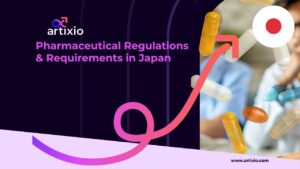Pharmacovigilance plays a vital role in ensuring the safety and efficacy of biologics, which are complex therapeutic agents derived from living organisms. This blog explores the unique aspects of pharmacovigilance for biologics in the United States, emphasizing regulatory requirements, challenges, and best practices based on official information from regulatory agencies and industry standards.
Understanding Biologics In USA
Biologics encompass a diverse group of products, including vaccines, monoclonal antibodies, gene therapies, and recombinant proteins. Produced using biological processes, biologics exhibit significant variability that necessitates rigorous safety monitoring. According to the FDA, biologics are defined as products that are “derived from living organisms and can include a variety of products such as vaccines, blood and blood components, cells, tissue, gene therapies, and proteins.”
Unique Characteristics of Biologics
Complexity: Biologics are generally larger and more complex than traditional small-molecule drugs, leading to potential variations in their safety and efficacy profiles.
Immunogenicity: Due to their biological nature, biologics can trigger immune responses in patients, resulting in potential adverse effects, including allergic reactions and diminished efficacy.
Regulation of Biologics in USA
In the USA, the regulation of biologics is primarily managed by the FDA’s Center for Biologics Evaluation and Research (CBER). Biologics are subject to different regulatory pathways than traditional pharmaceuticals, reflecting their unique properties and manufacturing processes.
Key Regulatory Components
Biologics License Application (BLA): Before marketing a biologic, companies must submit a BLA, demonstrating the product’s safety, purity, and potency through extensive clinical trials.
Postmarketing Requirements: Following approval, manufacturers may be required to conduct postmarketing studies to further assess safety and effectiveness, particularly for new or complex biologics.
Postmarketing Pharmacovigilance of Biologics in the USA (US FDA)
Postmarketing surveillance is essential for ensuring the ongoing safety of biologics. The FDA employs multiple systems and strategies to monitor adverse events associated with biologics after they reach the market.
Key Surveillance Mechanisms
FDA Adverse Event Reporting System (FAERS): This database collects reports of adverse events and medication errors, enabling analysis of safety signals related to biologics.
Risk Evaluation and Mitigation Strategies (REMS): For certain biologics, the FDA may require REMS to ensure that the benefits of the product outweigh its risks. These strategies may involve restricted distribution, patient education, and enhanced monitoring.
Unique Challenges in Pharmacovigilance of Biologics
Immunogenicity Monitoring
Immunogenicity presents a significant challenge in the pharmacovigilance of biologics. Adverse immune responses can lead to treatment failures and severe allergic reactions, necessitating continuous monitoring. Factors influencing immunogenicity include:
- Patient Factors: Genetics, pre-existing conditions, and prior exposure to similar biologics can affect individual immune responses.
- Product Characteristics: Variability in the manufacturing process, such as cell line choice and formulation, can impact the immunogenic potential of biologics.
Variability in Responses
Biologics may exhibit variability in patient responses, necessitating:
Robust Reporting Mechanisms: Pharmacovigilance systems must capture diverse patient outcomes and variations in drug responses to ensure safety.
Real-World Evidence (RWE): The use of RWE is increasingly recognized as crucial for understanding the effectiveness and safety of biologics in broader patient populations.
Signal Detection and Risk Management
Effective signal detection is crucial in pharmacovigilance for biologics. The FDA employs various methodologies to identify potential safety signals, leveraging advanced statistical analysis and data mining techniques.
Signal Detection Approaches
Statistical Data Mining: The FDA utilizes statistical methods to analyze large datasets of adverse event reports, facilitating the identification of potential safety signals associated with biologics.
Machine Learning Algorithms: The application of machine learning enhances the capability to analyze vast amounts of pharmacovigilance data, improving the identification of safety concerns.
Risk Management Strategies
Developing robust risk management strategies is essential for ensuring patient safety with biologics. This includes:
Comprehensive Risk Communication: Clear communication of potential risks associated with biologics to healthcare providers and patients is essential for effective risk management.
Enhanced Monitoring Programs: Continuous patient monitoring and follow-up are vital for identifying and addressing adverse events early.
Artixio’s Role in Supporting Biologics Pharmacovigilance
Artixio is dedicated to assisting companies with their pharmacovigilance needs for biologics. With a focus on regulatory compliance and risk management, Artixio offers a range of services tailored to the unique challenges of biologics.
Unique Value Proposition of Artixio
Regulatory Compliance Support: Artixio ensures that clients understand and meet FDA regulations, providing guidance on BLA submissions and postmarketing commitments.
Adverse Event Management: The company manages the collection, analysis, and reporting of adverse events related to biologics, ensuring compliance with regulatory requirements.
Signal Detection and Risk Analysis: Artixio utilizes advanced analytics to detect safety signals and develop appropriate risk management strategies for biologics.
Training and Education: Artixio offers training programs for healthcare professionals to enhance their understanding of pharmacovigilance practices for biologics.
Innovations and Best Practices
Artixio stays at the forefront of pharmacovigilance through:
- Integration of Technology: Leveraging cutting-edge technologies such as AI and machine learning to streamline adverse event reporting and enhance signal detection capabilities.
- Collaboration with Stakeholders: Engaging with healthcare professionals, regulatory bodies, and industry partners to foster a culture of safety and compliance.
- Real-World Evidence Utilization: Incorporating RWE to provide insights into the long-term safety and effectiveness of biologics, ensuring a comprehensive understanding of product performance.
Pharmacovigilance is a critical component of ensuring the safety and efficacy of biologics in the USA. With unique challenges such as immunogenicity and variability in patient responses, robust pharmacovigilance practices are essential. Artixio is committed to supporting companies in navigating these complexities, providing the expertise and resources needed to ensure compliance and enhance patient safety. By choosing Artixio as your pharmacovigilance partner, you can be confident in your ability to meet the highest standards of safety and regulatory compliance in the evolving field of biologics.
References
- https://www.fda.gov/vaccines-blood-biologics
- https://www.fda.gov/regulatory-information/search-fda-guidance-documents/immunogenicity-assessment-therapeutic-protein-products





